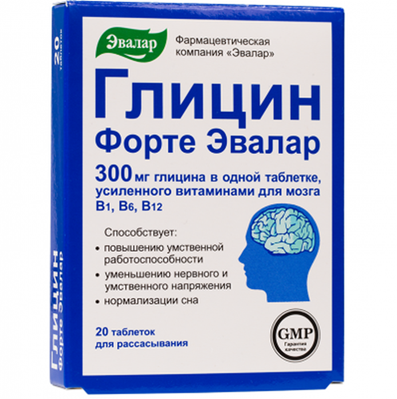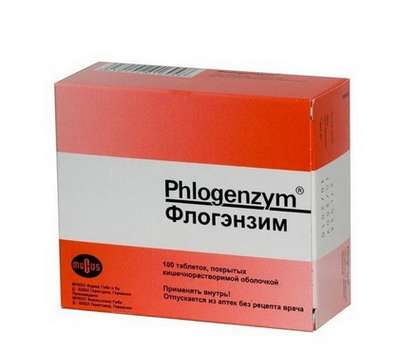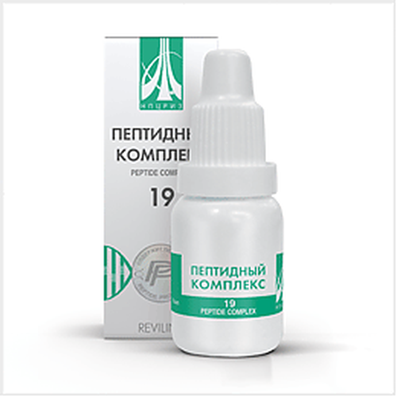Instruction for use: Adapalene (Adapaleneum)
I want this, give me price
Pharmacological group
dermotropic means
Nosological classification (ICD-10)
L70 Acne
Acne nodulocystica, Acne, Comedone acne, Acne Treatment, Papulous pustular acne, Papulopustulicular acne, Papulo-pustular acne, Acne, Acne Disease, Acne, Acne vulgaris, Nodular-cystic acne, Nodular-cystic acne
Code CAS 106685-40-9
Characteristics of the substance Adapalene
Synthetic analogue of retinoic acid, a derivative of naphthoic acid. A remedy for the treatment of acne.
White or almost white powder. Soluble in tetrahydrofuran, slightly soluble in ethanol, practically insoluble in water. Molecular weight 412.53.
Existing dosage forms of Adapalene: 0.1% and 0.3% gel on a water basis, 0.1% cream, 0.1% solution. In Russia, 0.1% gel and 0.1% cream are registered.
Pharmacology
Pharmacological action - anti-inflammatory, comedolitic.
Adapalene is a chemically stable retinoid-like compound. Studies of the biochemical and pharmacological profile of Adapalene have demonstrated that it is a modulator of the processes of cell differentiation, keratinization (keratinization) and inflammation that are involved in the development of acne vulgaris.
The exact mechanism of action of Adapalene is unknown, but it is assumed that with topical application it normalizes the differentiation of follicular epithelial cells and keratinization, preventing the formation of micro-medones, similarly to the action of retinoids. Unlike retinoic acid, Adapalene binds to specific nuclear receptors of retinoic acid receptors (RARs) and does not interact with the so-called retinoic acid receptors. cytosolic retinoic acid binding proteins (CRABPs).
Selectively binding to RARγ receptors on the nuclear membrane of keratinocytes, Adapalene increases the differentiation of keratinocytes, reduces the "adherence" of keratinocytes to the mouth of the sebaceous-follicles and speeds up their desquamation. Has a comedonolytic / anticomedogenic effect. Does not induce epidermal hyperplasia. Does not cause severe irritation, as it does not interact with RARα, the stimulation of which leads to the appearance of scaling and dry skin. Has an anti-inflammatory effect, affecting the factors of inflammation. Increases the sensitivity of the skin to UV radiation.
The therapeutic effect begins to appear after 1-2 weeks, persistent improvement is usually observed after 8-12 weeks.
Pharmacokinetics
Absorption of Adapalene through the human skin is low. In controlled clinical trials, after a long-term topical application of Adapalene in the form of 0.1% gel or 0.1% solution in the blood plasma of patients, only trace amounts of the substance were detected (<0.25 ng / ml). In a pharmacokinetic study in 6 patients with acne (acne) with application of 2 grams of 0.1% cream per 1000 cm2 skin surface with acne 1 time a day for 5 days, Adapalene was not quantitatively determined in plasma samples of any of the patients (limit determinations = 0.35 ng / ml). Eliminated mainly by the biliary route.
Carcinogenicity, mutagenicity, effects on fertility
In studies on animals with topical application of Adapalene in doses of 0.3; 0.9 and 2.6 mg / kg / day (gel, solution) or 0.4; 1,3 and 4,0 mg / kg / day (cream) in mice were not carcinogenic. When administered orally (in rats) at doses of 0.15; 0.5 and 1.5 mg / kg / day (approximately 4-75 times the maximum daily dose for humans with topical application), an increase in the incidence of follicular cell adenoma and thyroid carcinoma in female rats and benign and malignant forms of pheochromocytoma adrenal glands in male rats.
Studies of the photocarcinogenicity of Adapalene have not been carried out. However, animal studies show that other pharmacologically similar drugs (eg local action retinoids) increase the risk of oncogenicity when used concurrently with UV irradiation or exposure to sunlight. These results were observed in the experiment under certain conditions, but not in all test systems. Although the significance of this data for a person is unclear, patients should avoid both UV exposure and sun exposure.
There was no mutagenic and genotoxic effect of Adapalene in a number of tests, incl. in vivo (micronucleus test in mice) and in vitro (Ames test, Chinese hamster ovary test, TK test on mouse lymphoma).
Studies of the effect of Adapalene on reproduction and fertility in rats when administered orally at doses up to 20 mg / kg / day (up to 80 times the MPDR, in mg / m2) revealed no effect on reproductive function or fertility in F0 males or females. Also, there was no impact on the growth, development and reproductive function of the F1 generation.
Clinical researches
In two controlled (control - the basis of the cream) clinical studies of Adapalene in the form of 0.1% cream patients 12-30 years with mild to moderate acne were involved; patients were instructed to apply the cream 1 time per day before bedtime for 12 weeks. In one study, patients were provided with soap-free detergents and recommended avoiding the use of moisturizers. During the study, no other local drugs were applied to the face, except 0.1% of Adapalene cream. Adapalene was shown to be significantly more effective than control with respect to reducing the elements of the rash.
Application of Adapalene
Ordinary (youthful) acne (acne vulgaris).
Contraindications
Hypersensitivity.
Restrictions for use
Seborrheic dermatitis, eczema, children's age (safety and efficacy in children under 12 years are not defined).
pregnancy and lactation
When pregnancy is possible, if the expected effect of therapy exceeds the potential risk to the fetus (adequate and strictly controlled safety studies have not been conducted).
Teratogenic effects. There was no teratogenic effect in rats with Adapalene administered orally at doses of 0.15 to 5.0 mg / kg / day (up to 120 times higher than MPDA in topical application).
However, oral administration of an animal dose of ≥25 mg / kg / day results in teratogenic effects in rats and rabbits.
Teratological studies of cutaneous application of Adapalene in animals (rats and rabbits) showed that when doses of 0.6, 2,0 and 6,0 mg / kg (up to 150 times the MPDA at local application), no fetotoxic effect is observed, but a minimal increase in the number of ribs in the offspring of rats was recorded.
The action category for fetus by FDA is C.
Nursing women should be careful when using (it is not known whether Adapalene penetrates the breast milk of women, but many drugs are excreted with the milk of women).
Side effects
Cream 0,1%
In controlled clinical trials, 285 patients with acne when applying 0.1% of Adapalene cream once a day for 12 weeks monitored local skin irritation, assessing the frequency and severity of such effects as erythema, peeling, dry skin, itching, burning.
Other local reactions in patients who used 1% cream were acne enhancement, dermatitis and contact dermatitis, eyelid edema, conjunctivitis, skin discoloration, rash, eczema.
Gel 0.1%
Local reactions (10-40%): erythema, dryness and flaking of the skin, itching, burning. Approximately 20% of patients had itching and burning immediately after application of the gel. In addition, there were (≤1%): skin irritation, burning / pricking, sunburn, acne enhancement. The occurrence of side effects is most likely in the first 2-4 weeks of treatment, then their frequency and severity are reduced. All the side effects observed during clinical trials were reversible and disappeared after discontinuation of therapy.
Interaction
Against the background of the use of Adapalene, it is possible to use other agents for the treatment of acne, incl. benzoyl peroxide, antibiotics in topical dosage forms (clindamycin, erythromycin). However, it should be remembered that simultaneous application to the same skin areas and at the same time is not recommended, because the physical incompatibility of medicines or the change in pH when used together may reduce the effectiveness of Adapalene. With concomitant use with the aim of achieving a better clinical effect, it is recommended to use medicines at different times of the day, for example, in the morning and in the evening, to minimize possible irritation of the skin.
Since Adapalene can cause local skin irritation in some patients, simultaneous use with other potentially irritating agents (therapeutic or abrasive soaps and detergents, soap and cosmetic products with drying effect, perfumes, ethanol-containing agents, etc.) is not recommended to avoid a cumulative effect. . With extreme caution, agents containing sulfur, resorcinol, salicylic acid should be used in combination with Adapalene. If these medicines are used, it is advisable not to begin therapy with Adapalene until the effects of these drugs on the skin disappear.
Overdose
Excessive application of the gel or cream does not lead to a faster or better result, at the same time, marked skin reactions - redness, flaking, discomfort, can be noted.
Acute oral toxicity in mice and rats was observed at doses above 10 ml / kg. Chronic ingestion of the substance may cause the same adverse effects as excessive oral administration of vitamin A.
Routes of administration
Outwardly.
Precautions for the Adapalene
Do not use in patients with erythema (including those caused by weathering, sunlight), damage to the skin until the time of full recovery. Use in patients with eczema may cause increased skin irritation.
It should be borne in mind that in the first 3 weeks of therapy, acne can be aggravated, and treatment should not be discontinued. When there is a pronounced side effect - irritation and dry skin, etc. - it is necessary to stop using Adapalene (temporarily or completely).
If hypersensitivity reactions develop, Adapalene should be discontinued. It is necessary to warn patients that when receiving a sunburn, do not use Adapalene until full recovery.
During the application of Adapalene, direct sunlight and UV irradiation should be avoided (skin irritation is possible). In the case of forced long exposure to the sun, one should not apply Adapalene the day before, on the day of the solar exposition, and also the next day. To minimize UV exposure, as well as to reduce the influence of weather conditions, it is recommended to use sunscreens and protect the treated skin with clothing. Unfavorable weather conditions, incl. wind, cold, can contribute to skin irritation in patients using Adapalene.
Avoid contact with the eyes, lips, nasal mucosa, accidental contact - rinse thoroughly with warm water.
Gel is recommended for oily and normal skin, the cream is for dry and sensitive.
If no improvement occurs after 8-12 weeks of treatment, a doctor's consultation is necessary.

 Cart
Cart





